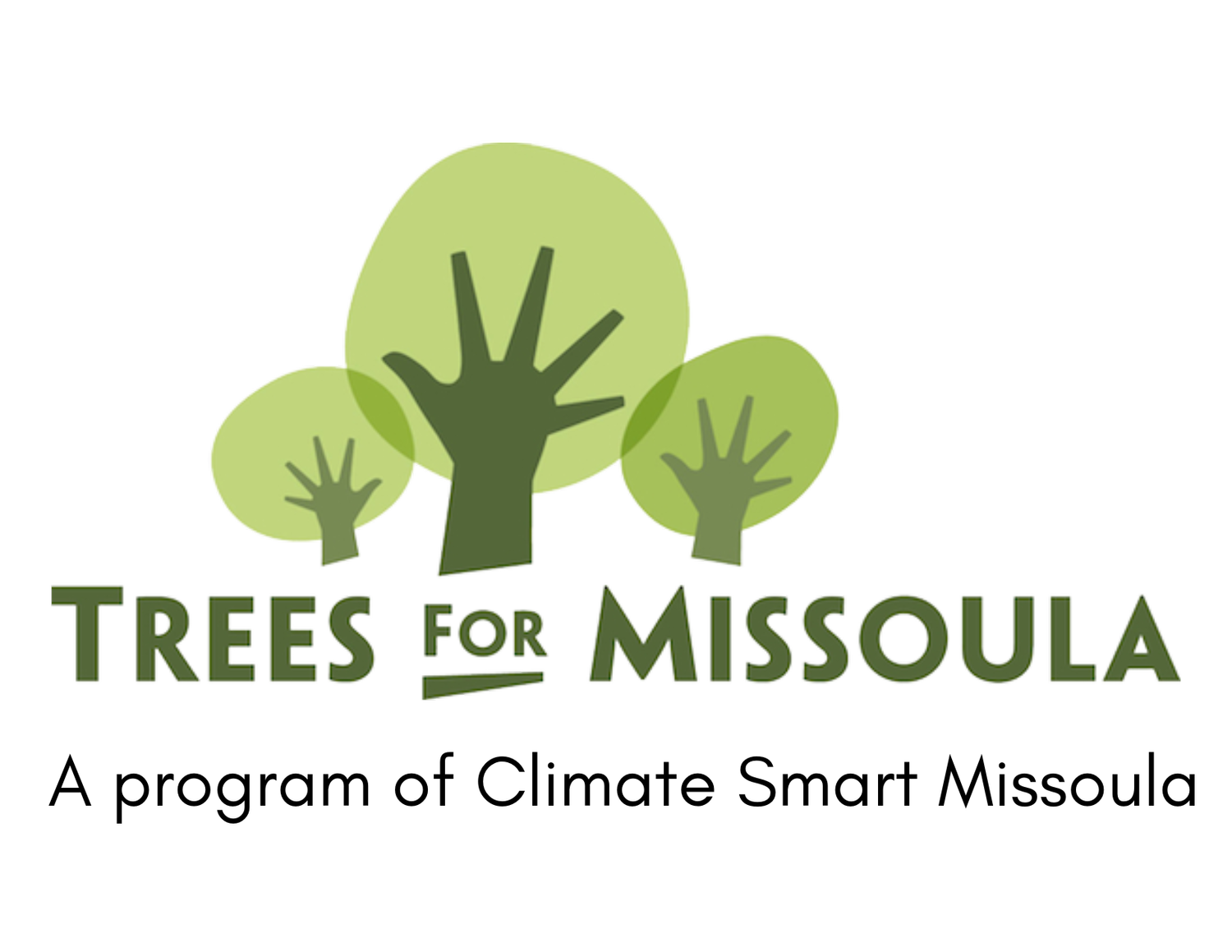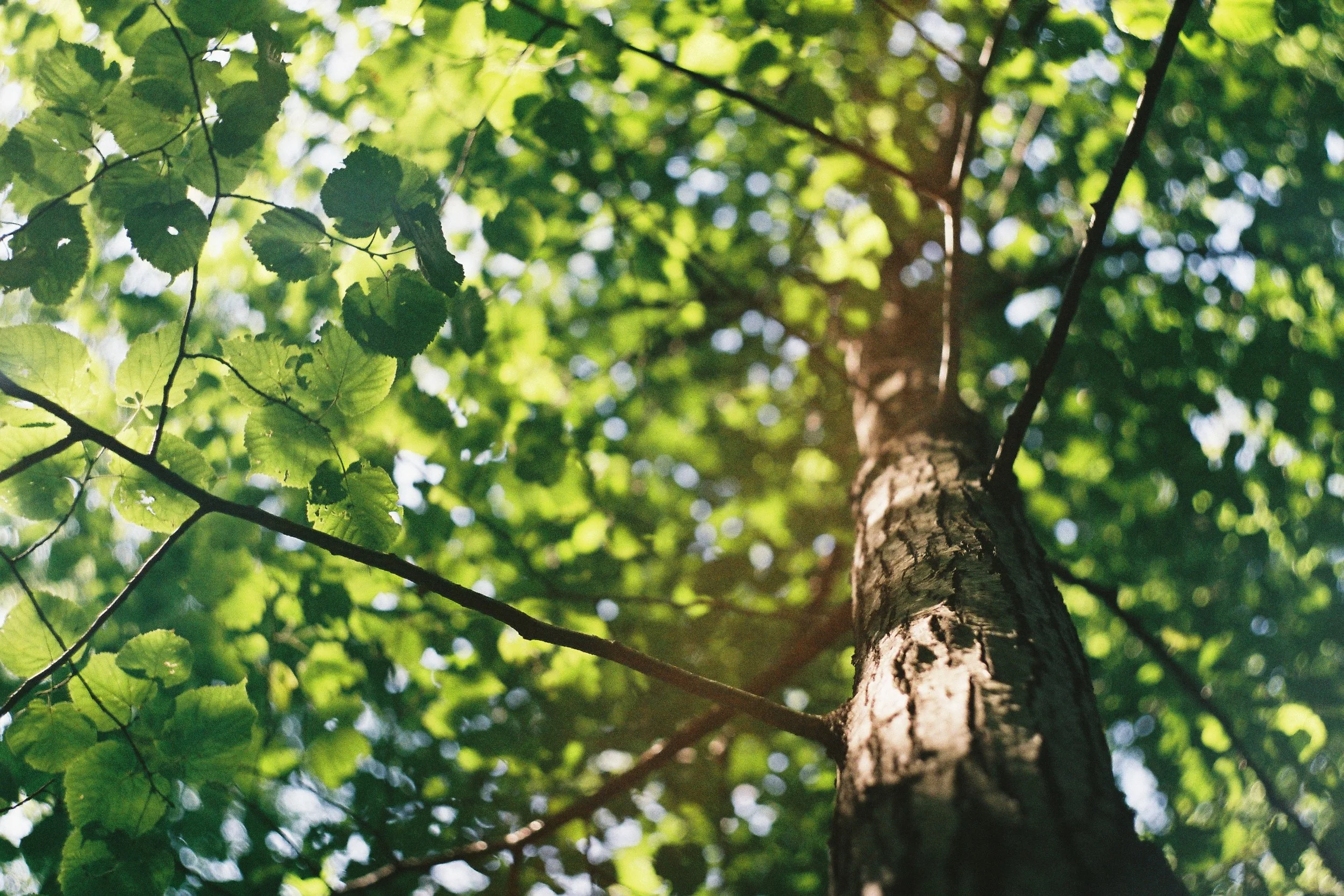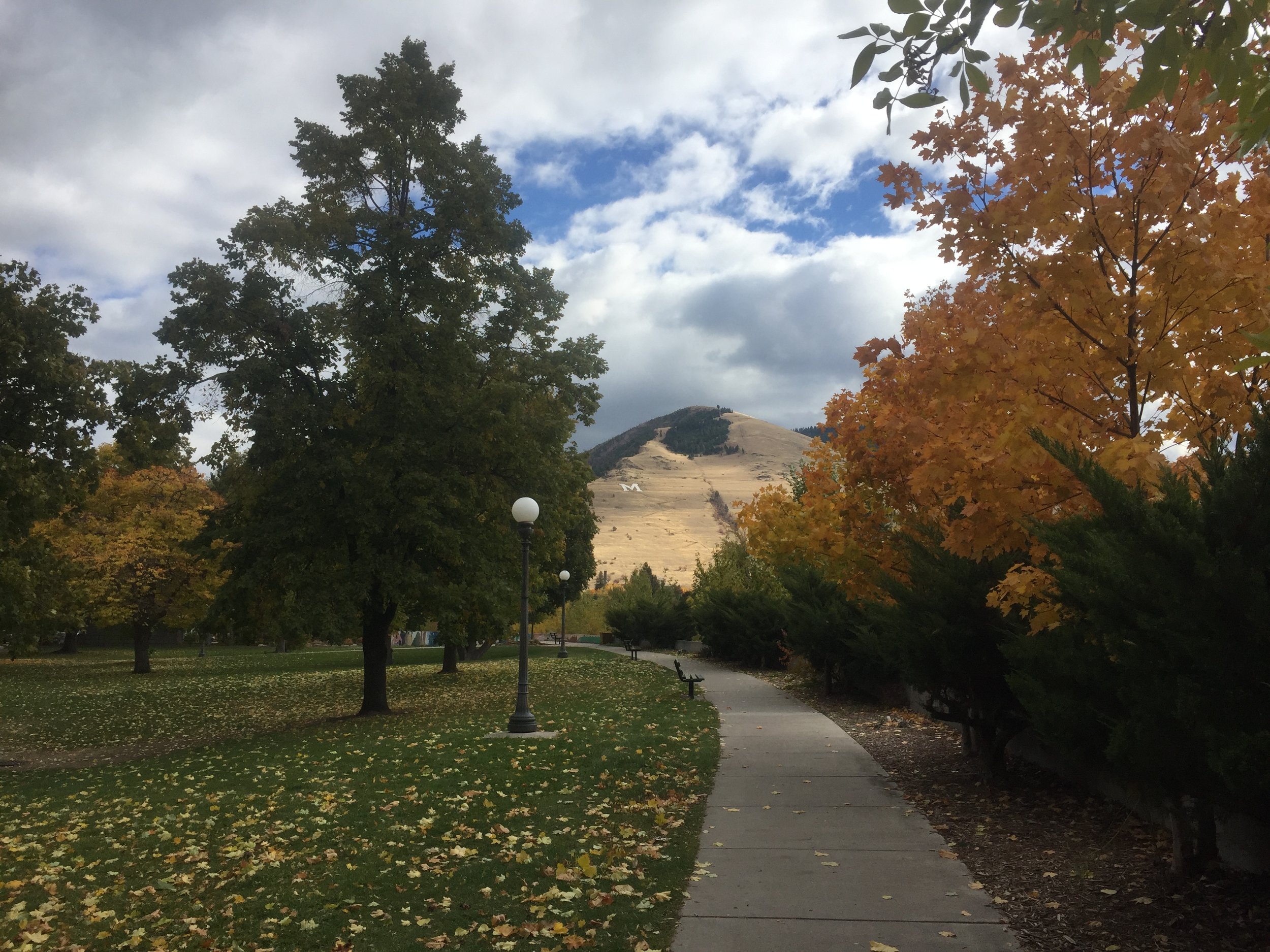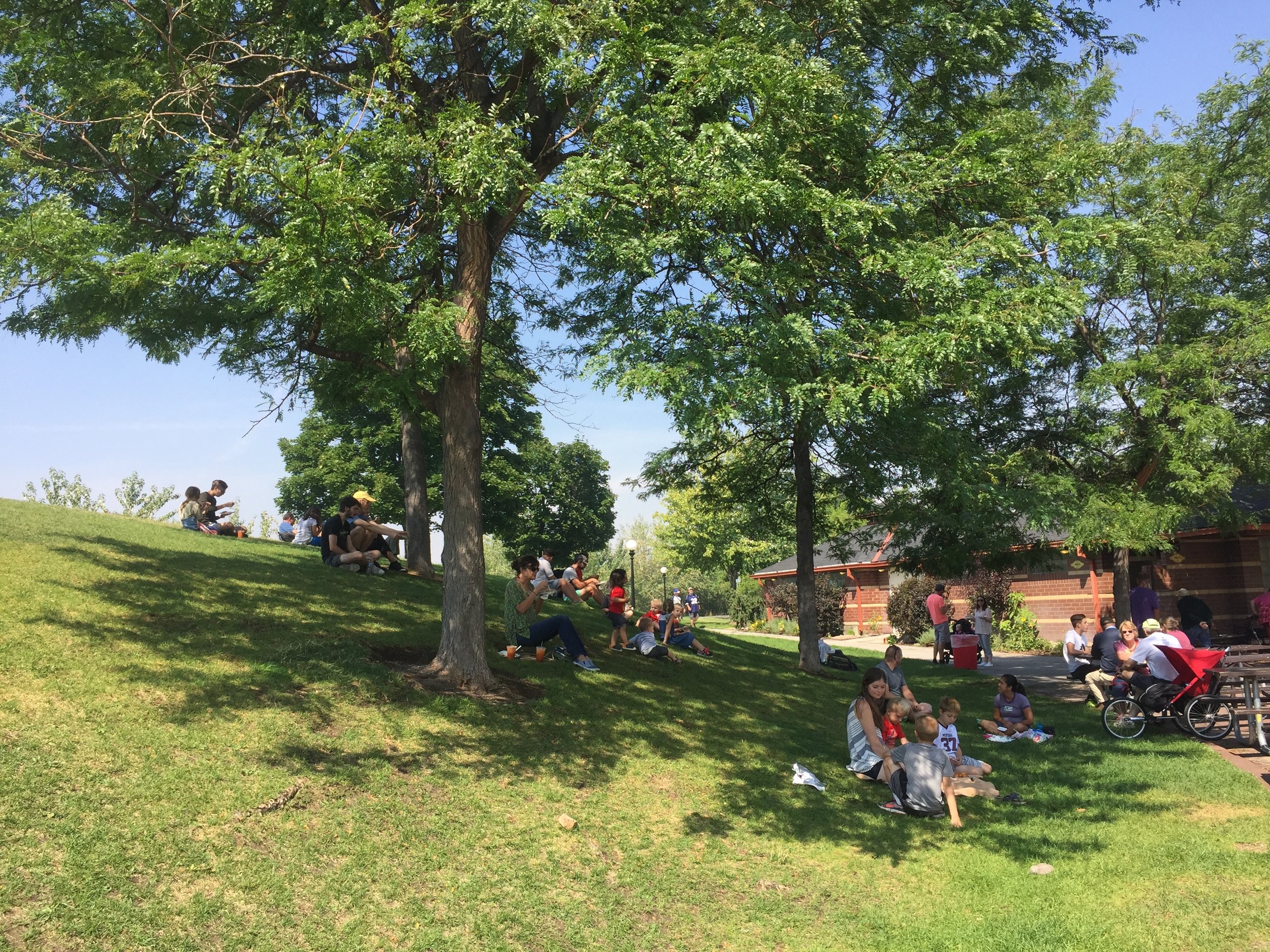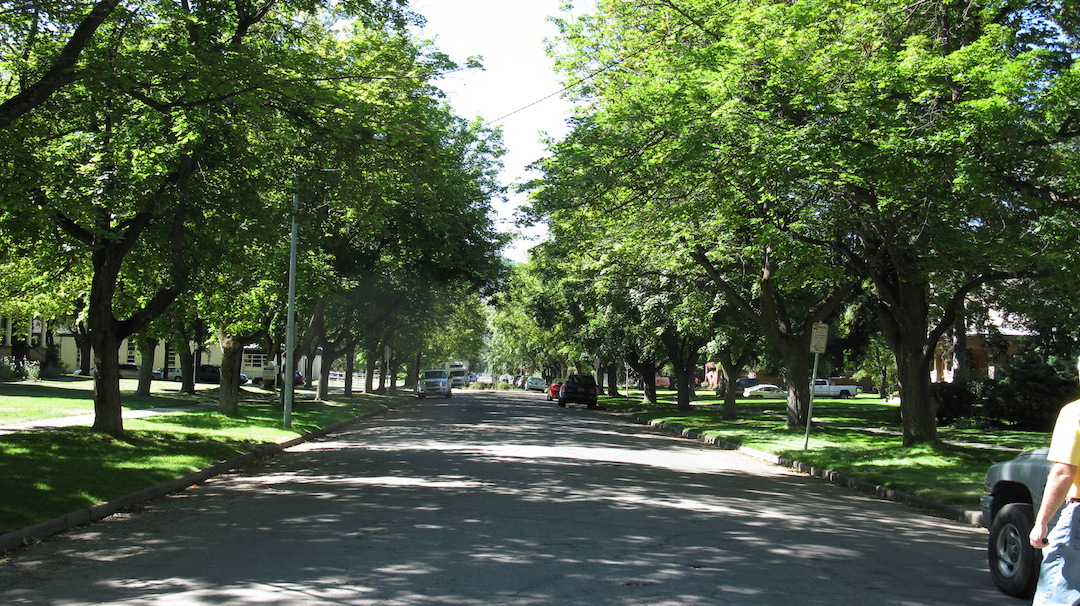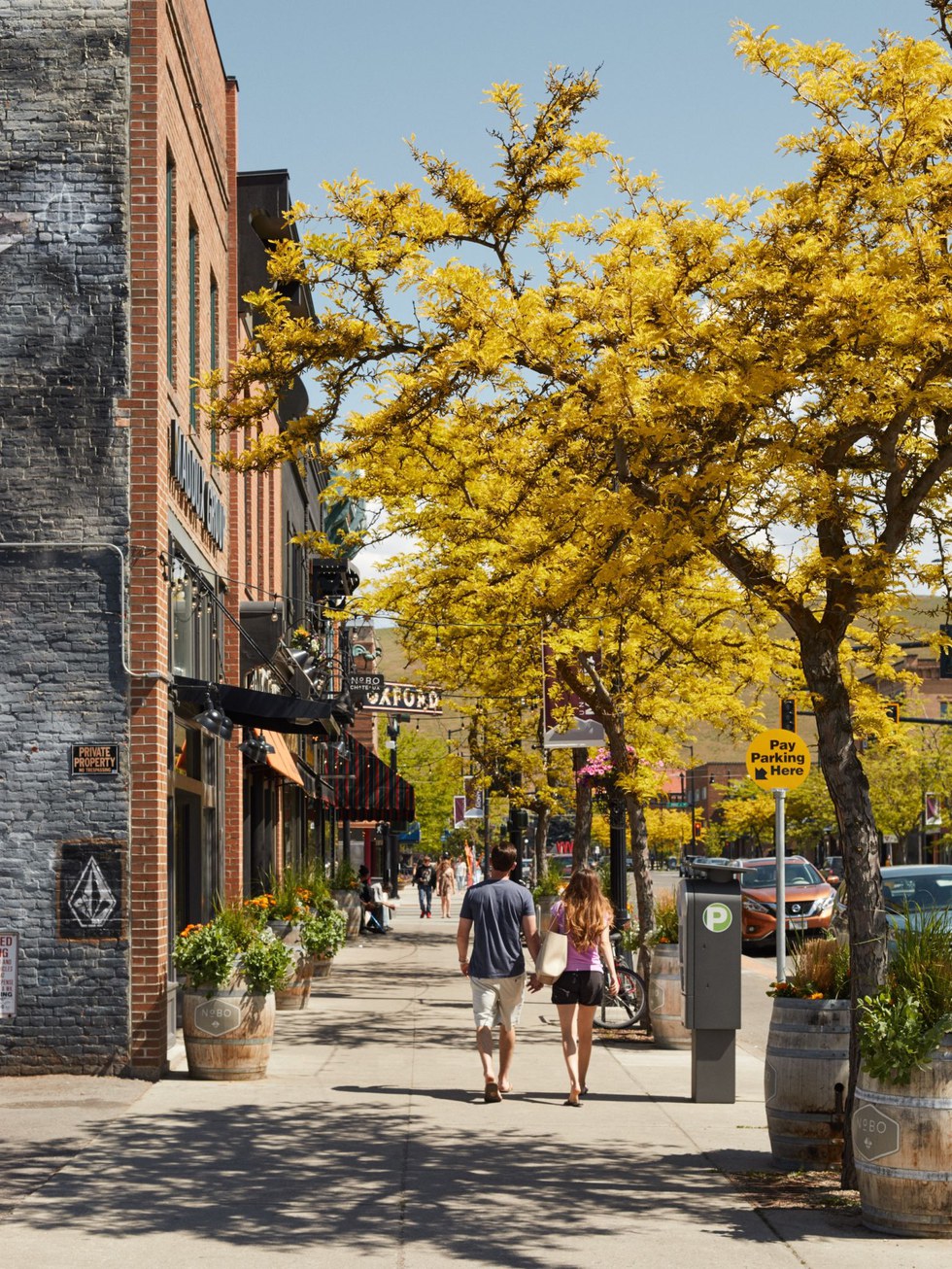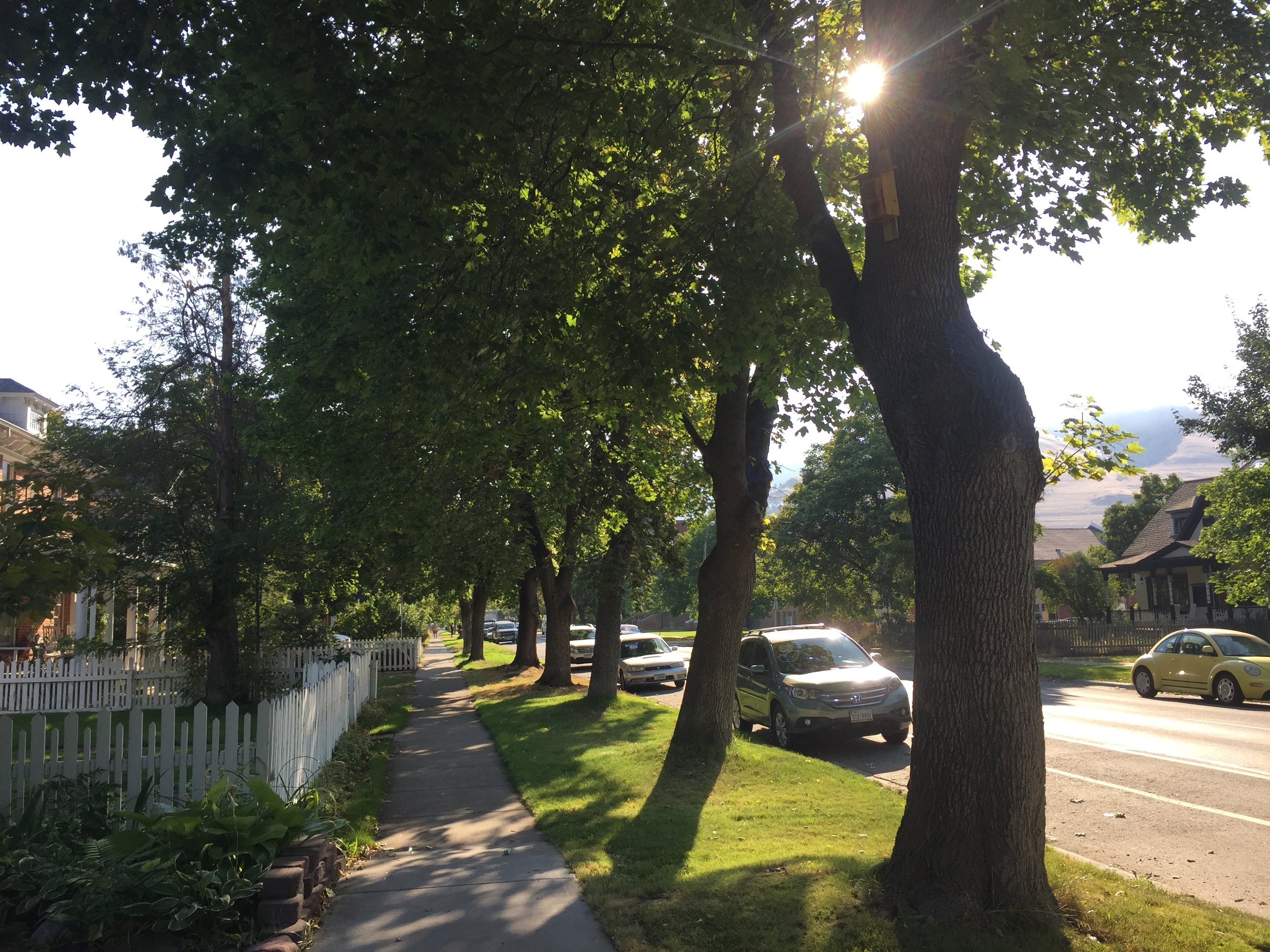Missoula Urban Forest FAQ’s
What is an urban forest?
An urban forest is comprised of all the trees and shrubs within city limits. Missoula’s Urban Forestry Division is responsible for almost 30,000 of those trees.
What is the urban heat island effect and how do trees help this?
Urban heat island effect is where urbanized areas experience higher temperatures than outlying areas, because of structures such as buildings, roads that absorb and re-emit the sun’s heat. Urban areas, where these structures are highly concentrated and greenery is limited, become “islands” of higher temperatures relative to outlying areas. Planting heat-tolerant and shade urban trees in appropriate locations and constructing shade shelters throughout the community are further solutions to cooling down urban areas. Visit Stay Cool Missoula to learn more about what Missoula is doing to combat extreme heat!
What is tree inequity?
Tree inequity refers to the unequal distribution of trees and their benefits across communities. In Missoula, neighborhoods with lower incomes often have less tree canopy cover, limiting access to benefits like shade, cleaner air, and improved well-being. To address this, we’re prioritizing tree plantings in underserved neighborhoods to ensure all residents can enjoy the advantages of a robust urban forest. Learn more about tree equity efforts on our Projects page.
How do I Plant, Water and Care for my trees?
Find all things about planning for new trees and caring for your trees on our Stewardship 101 page!
What is the current status of Missoula’s urban forest?
The health of our urban forest is declining. The average condition of public trees ranges from fair to poor, with 30% classified as poor to very poor. Key factors contributing to this decline include limited species diversity, inconsistent long-term care, and the severe impact of the July 2024 storm, which resulted in thousands of harmed public trees and the resulting delay of planting boulevard trees.
How do I know how much water my trees need?
Generally, during the driest and hottest months, July, August and September, water your trees at least one hour a week. To find more detailed information about how much you should water your trees: Watering Trees or https://www.ci.missoula.mt.us/293/How-Much-Water-do-My-Trees-Need
I am planting a tree in my yard. Do you have planting instructions?
Please refer to our Stewardship 101 page! The City of Missoula Parks & Recreation also has approved planting notes and details PDFs
How can I get a new boulevard tree?
Tree-planting sites must be inspected for suitability, size of boulevard space, underground and overhead utilities, infrastructure and irrigation. Once a site has been approved for planting, the corresponding address is added to a planting waitlist. To find out if a boulevard site is suitable for tree planting, contact Urban Forestry at 406.552.6253 or citytrees@ci.missoula.mt.us. Also visit their website for more details on planting: https://www.ci.missoula.mt.us/234/Plant-a-Tree
Can I get a tree planted sooner?
If you would like a tree planted immediately, your planting site must first be inspected and approved for suitability. You can then hire a certified arborist who will then apply for a no-fee permit. You will be responsible for purchasing the tree chosen from your Neighborhood Planting Plan if one exists or the City’s Approved Street Tree List.
For more information about contracting tree-planting services within public right-of-way, contact Urban Forestry at 552-6253 or visit their website: https://www.ci.missoula.mt.us/234/Plant-a-Tree
Can I choose the tree that will be planted in my boulevard?
To ensure a tree’s survivability, it is important to choose a species appropriate for Missoula’s climate and physical environment. Missoula’s Urban Forestry Division has researched and created an extensive list of approved street trees that are also appropriate for planting in your yard. http://www.ci.missoula.mt.us/DocumentCenter/View/26551
Visit our planning page for our suggestions on climate resilient tree species!
My private tree needs inspecting. Who should I contact?
The City of Missoula website lists local certified arborists licensed with the City.
https://www.ci.missoula.mt.us/596/Local-Certified-Arborists-List
The International Society of Arboriculture (ISA) website lists certified arborists by area.
https://www.treesaregood.org/findanarborist
Missoula County Extension and Weed District’s Plant Clinic can help with plant care and pest management issues. Bring in samples of bugs, plants and/or disease problems to be identified and find information on how to control them.
https://missoulaeduplace.org/what-we-do/horticulture-agriculture/plant-clinic/
What is a certified arborist and why is one required to be able to work on publicly owned trees?
The International Society of Arboriculture (ISA), the regulatory body for certified professional tree care, tests and certifies an individual's knowledge in the field of arboriculture. ISA certifies that an individual has attained a generally accepted level of knowledge in such areas as tree biology, diagnosis, maintenance practices, safety and other subject and practice areas within the tree care profession.
The City of Missoula requires all tree care within city ROW to be under the guidance of a certified arborist. The City currently employs four certified arborists and three tree risk assessors.
My boulevard tree was removed and not replaced. Why?
Not all sites were suitable for street trees to be planted originally, and therefore, will not be replaced. Site suitability depends on size of boulevard space, underground and overhead utilities, infrastructure and irrigation in addition to other factors.
What are the responsibilities of a property owner or renter to the street trees adjacent to their property?
The owner of a property adjacent to a public tree is responsible for watering the tree.
How can I volunteer and help our city’s trees?
Trees for Missoula, an urban forest advocacy and volunteer group, is always looking for community members interested in trees and the urban forest to help in a variety of ways from pruning and planting to grant writing.
For more information about how you can help the urban forest, check out our volunteer page.
-
Urban Forestry Department Contact Information: (406)552-6355 and citytrees@ci.missoula.mt.us
To find out if a tree on my property is in the public right-of -way (ROW).
A tree in the ROW needs inspecting .
Public trees on a street or in a park looks like it’s failing.
A sidewalk, street, street sign, intersection or alley is being obstructed by vegetation.
New construction/sidewalk/excavation is posing a potential conflict with a tree.
More information on the Missoula Urban Forestry Department Website!
